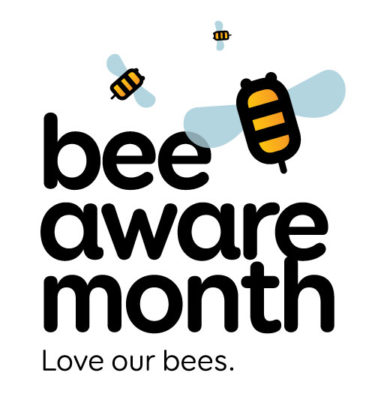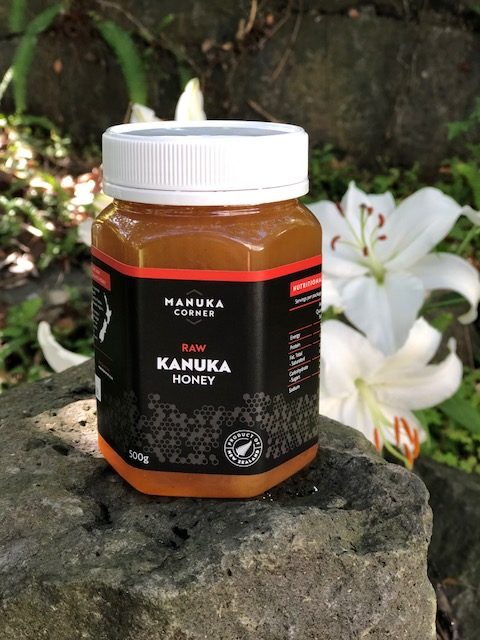September is Bee Aware Month in New Zealand and is coordinated by Apiculture New Zealand.
 Founded 2013, the aim of Bee Aware Month is to help us all learn about bees and understand the importance of honey bees and the apiculture industry, and to share practical advice and information about how to ensure a sustainable future for bees.
Founded 2013, the aim of Bee Aware Month is to help us all learn about bees and understand the importance of honey bees and the apiculture industry, and to share practical advice and information about how to ensure a sustainable future for bees.
Bees around the world are in trouble. Biosecurity, pesticide use, diseases and bugs are just some of the problems bees face. While our Kiwi bees are not declining in numbers as much as bees in some other countries, events like Bee Aware Month are crucial to raising public awareness to prevent similar losses occurring.
A world without bees would be a very bleak place indeed. Much of our food depends on pollination by bees, as do our gardens and a lot of other products we rely on. Over $5 billion of New Zealand’s agricultural exports also depend on bees.
Bee informed
To recognise Bee Aware Month and get the buzz going, the team here at Manuka Corner (with a little help from our friends at Apiculture New Zealand – https://apinz.org.nz/bee-aware-month and https://www.facebook.com/beeawarenz/ – has decided to put together a swarm of sticky questions to see just how much you know about our honey creating buddies. The more we know about bees, the more we can do to protect them and the more gorgeous honey we’ll all have to enjoy.
Below are twenty un-bee-lievable bee facts. Let’s learn about bees!
(The answers are at the bottom of the page.)
1. How many kgs of honey do bees produce to make 1 kg of wax?
a. 1
b. 4
c. 8
2. Honey bees have furry eyes.
a. True
b. False
3. Bees can see ultraviolet light.
a. True
b. False
4. How fast can a honey bee fly?
a. 6km/h
b. 28km/h
c. 24km/h
5. To make 1kg of honey how many flowers do bees need to visit?
a.400,000
b. 1,000,000
c. 4,000,000
6. How many stomachs do bees have?
a. 1
b. 2
c. 3
7. On one average flight from the hive to collect honey, how many flowers will a honey bee visit?
a. between 100-150
b. between 50 -100
c. between 25 – 50
8. How long can a queen bee live for?
a. about 18 months
b. about 3 years
c. about 5 years
9. The production of 1 kg of honey is the lifetime work of approximately how many bees?
a. approximately 1500 bees
b. approximately 1000 bees
c. approximately 500 bees
10. What do you call the parts of the worker bees back legs that carry pollen?
a. Pollen pocket
b. Pollen basket
c. Pollen purse
11. How many species of native bees do we have in New Zealand?
a. 6
b. 13
c. 28
12. How does a honey bees breathe?
a. through little holes along its abdomen
b. through its mouth
c. through its proboscis
13. How many times per second does a honey bee move their wings?
a. 200 times per second
b. 230 times per second
c. 250 times per second
14. About how many bees live in one colony?
a. 10,000
b. 50,000
c. 100,000
15. How many eyes do bees have?
a. 2
b. 3
c. 5
16. Approximately how many different substances does honey contain?
a. 90
b. 105
c. 180
17. A bee’s body is divided into how many parts?
a. 3
b. 5
c. 7
18. What do bees use to collect pollen?
a. their tongues
b. their hair
c. their legs
19. All bees can sting us.
a. True
b. False
20. What is the lifespan of a worker bee?
a. a. six to eight weeks
b. a. six to eight months
c. six to eight years
Eating New Zealand honey
Our bees create a wide range of delicious, high quality honeys. By eating our honeys you are not only choosing a natural sweet option, you are supporting our beekeepers who work hard to care for our bees and their environment.
Bee a local
For your own personal health, and the NZ bee health, buy local, raw honey and beeswax products. As beekeepers, we use products from our hives to create soaps, lotions, beewraps and beeswax candles.
Why not go to one of our Auckland markets and bee friendly? You can help save the bees by supporting a beekeeper in your area, and if you want to learn about bees, you’ll have a great source for all your questions.
Like all beekeepers, we love our bees and work hard to take care of them.

Answers:
- c. 8 is correct – It takes about 8 kg of honey to produce 1 kg of wax
- a. true
- a. true
- b. 28km/h is correct
- c. To make one kg of honey, the bees in the colony would need to visit 4 million flowers.
- b. 2 is correct – Honey bees have a special ‘honey stomach’ to carry the nectar they collect back to the hive.
- a. On one flight from the hive to collect honey, a honey bee will visit between 50 – 100 flowers.
- c. The queen bee can live up to 5 years.
- a. It will be the lifetime work of approximately 1,500 bees.
- b. Pollen basket is correct.
- c. is correct
- a. is correct
- a. is correct. The honey bee beats its wings 11,400 times per minute – it’s so fast we hear it as a buzzzzz.
- b. is correct. A colony of bees can house as many as 50,000 members, which makes bees among the most socially cooperative insects in the world.
- c. is correct. Honey bees have 5 eyes, 3 small ones on top of the head and 2 big ones in front.
- c. is correct. Honey contains more than 180 different substances. These include 5 enzymes, 6 different vitamins, 8 distinctive lipids, 10 minerals, 17 trace elements, 18 different acids, 18 different amino acids (proteins) 18 bioflavonoides (antioxidants), 26 aroma compounds.
- a. is correct. Bees and all other insects have a body made of three parts: head, thorax, and abdomen.
- b. is correct. A bee’s body is covered with fine hairs, which collect pollen when they come into contact with it.
- b. is correct. Drones do not have stingers and cannot sting us.
- a. is correct. The average worker bee lives around six to eight weeks.
